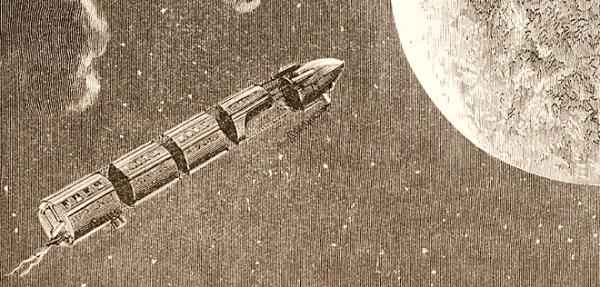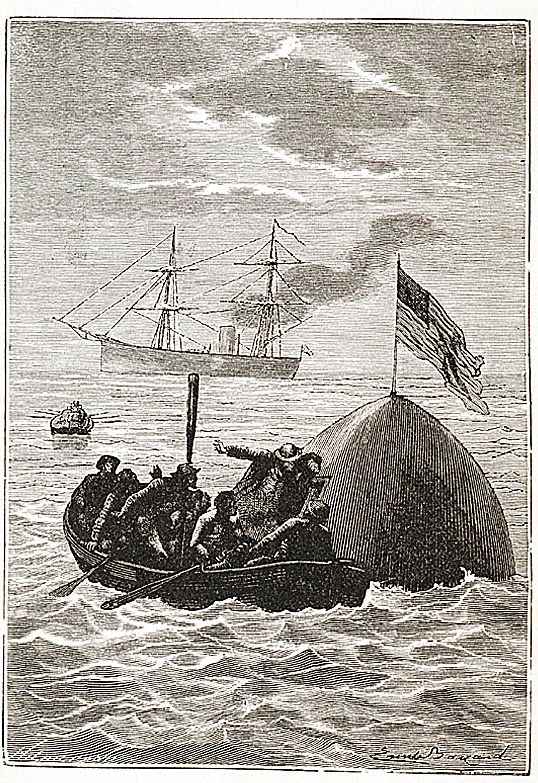







The 1969 Apollo program bears some striking similarities to Verne's story:1. Verne's cannon was called Columbiad; the Apollo 11 command module (Apollo CSM) was named Columbia.
2. The spacecraft crew consisted of three persons in each case.
3. The physical dimensions of the projectile are very close to the dimensions of the Apollo CSM.
4. Verne's voyage blasted off from Florida, as did all Apollo missions. (Verne correctly states in the book that objects launch into space most easily if they are launched towards the zenith of a particular location, and that the zenith would better line up with the moon's orbit from near the Earth's equator. In the book Florida and Texas compete for the launch, with Florida winning.)
5. The names of the crew, Ardan, Barbicane, and Nicholl, are vaguely similar to Bill Anders, Frank Borman, and Jim Lovell, the crew of Apollo 8, the first manned spacecraft to travel to the moon, although it didn't actually land.
6. The cost of the program in the book is very similar to the total cost of the Apollo program until Apollo 8.

During their return journey from the moon, the crew of Apollo 11 made reference to Jules Verne's book during a TV broadcast on July 23. The mission's commander, astronaut Neil Armstrong, said, "A hundred years ago, Jules Verne wrote a book about a voyage to the Moon. His spaceship, Columbia [sic], took off from Florida and landed in the Pacific Ocean after completing a trip to the Moon. It seems appropriate to us to share with you some of the reflections of the crew as the modern-day Columbia completes its rendezvous with the planet Earth and the same Pacific Ocean tomorrow."






Click to join 3rdReichStudies
Disclaimer:The Propagander!™ includes diverse and controversial materials--such as excerpts from the writings of racists and anti-Semites--so that its readers can learn the nature and extent of hate and anti-Semitic discourse. It is our sincere belief that only the informed citizen can prevail over the ignorance of Racialist "thought." Far from approving these writings, The Propagander!™ condemns racism in all of its forms and manifestations.
Fair Use Notice: The Propagander!™ may contain copyrighted material the use of which has not always been specifically authorized by the copyright owner. We are making such material available in our efforts to advance understanding of historical, political, human rights, economic, democracy, scientific, environmental, and social justice issues, etc. We believe this constitutes a "fair use" of any such copyrighted material as provided for in section 107 of the US Copyright Law. In accordance with Title 17 U.S.C. Section 107, the material on this site is distributed without profit to those who have expressed a prior interest in receiving the included information for research and educational purposes. If you wish to use copyrighted material from this site for purposes of your own that go beyond 'fair use', you must obtain permission from the copyright owner.
Sources: Two superior Yahoo! Groups, magazinearchive and pulpscans, are the original sources for the scans on this page. These Groups have a number of members who generously scan and post rare and scarce magazine and pulp scans for no personal gain. They do so for love of the material and to advance appreciation for these valuable resources. These Groups are accepting new members; join now!